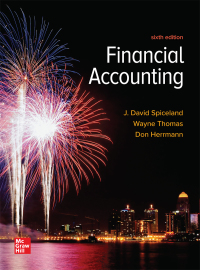Question
A company turns polystyrene resin into recyclable/disposable containers for the food industry. Polystyrene is purchased as a commodity in the form of resin pellets. The
A company turns polystyrene resin into recyclable/disposable containers for the food industry. Polystyrene is purchased as a commodity in the form of resin pellets. The resin is unloaded from bulk rail containers or overland trailers into storage silos. Making the food containers is a two-step process. First, resin is conveyed to an extruder, which converts it into a polystyrene sheet that is wound into rolls. The plastic comes in two forms -- clear and black. The rolls are either used immediately to make containers or are put into storage. Second, the rolls are loaded onto thermoforming presses, which form the sheet into containers and trim the containers from the sheet. The two manufacturing steps are shown in Figure 1. Over the past five years, the plastic packaging business has grown steadily. Demand for containers made from clear plastic comes from grocery stores, bakeries, and restaurants. Caterers and grocery stores use the black plastic trays as packaging and serving trays. Demand for clear plastic containers peaks in the summer months, whereas demand for black plastic containers peaks in the fall. Capacity on the extruders is not sufficient to cover demand for sheets during the peak seasons. As a result, the plant is forced to build inventory of each type of sheet in anticipation of future demand. Table 1 display historical quarterly demand for each of the two types of containers (clear and black). The team modified sales data by accounting for lost sales to obtain true demand data. Without the customers involved in this team, the company would never have known this information, as the company did not keep track of lost orders.
Forecasting As a first step in the teams decision making, it wants to forecast quarterly demand for each of the two types of containers for the years 2010 to 2012. Based on historical trends, demand is expected to continue to grow until 2012, after which it is expected to plateau. The manager must select the appropriate forecasting method and estimate the likely forecast error. Which method should she choose? Why? Using the method selected, forecast demand for the years 2010 to 2012.
Hint: You need to examine all four methods (moving average, simple exponential smoothing, Holts model, and Winters model) to see which one gives you the least errors (using measurements for forecasting errors, similar to the one we used for Tahoe salt example). Please submit 1 excel file containing 4 sheets for 4 methods.
If there is any way to attach or send the excel file so I can see the equations used so I can better understand how it's done that would be great!

If there is any way to attach or send the excel file so I can see the equations used so I can better understand how it's done that would be great!
Table 1. Quarterly historical demand for clear and black plastic containers Black Plastic Demand ('000 lb) Clear Plastic Demand ('000 lb) Year Quarter 2005 1 II III IV 2006 I II III IV 2007 . 11 2,250 1,737 2,412 7,269 3,514 2,143 3,459 7,056 4,120 2,766 2,556 8,253 5,491 4,382 4,315 12,035 5,648 3,696 4,843 13,097 3,200 7,658 4,420 2,384 3,654 8,680 5,695 1,953 4,742 13,673 6,640 2,737 3,486 13,186 5,448 3,485 7,728 16,591 8,236 3,316 III IV 2008 . 11 III IV 2009 | II III IV
Step by Step Solution
There are 3 Steps involved in it
Step: 1

Get Instant Access to Expert-Tailored Solutions
See step-by-step solutions with expert insights and AI powered tools for academic success
Step: 2

Step: 3

Ace Your Homework with AI
Get the answers you need in no time with our AI-driven, step-by-step assistance
Get Started


